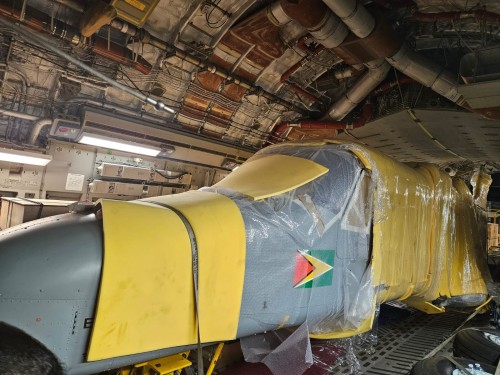
A NASA photo
WASHINGTON (PTI): NASA has successfully flight tested a revolutionary shape changing aircraft flap for the first time, which could pave the way for lighter, quieter and more fuel-efficient airliners.
Researchers replaced an airplane's conventional aluminium flaps with advanced, shape-changing assemblies that form seamless bendable and twistable surfaces.
Flight testing will determine whether flexible trailing-edge wing flaps are a viable approach to improve aerodynamic efficiency and reduce noise generated during takeoffs and landings, NASA said.
The Adaptive Compliant Trailing Edge (ACTE) project is a joint effort between NASA and the US Air Force Research Laboratory (AFRL).
A variable geometry airfoil system called FlexFoil was developed that can be retrofitted to existing airplane wings or integrated into brand new airframes.
"This flight test is one of the NASA Environmentally Responsible Aviation (ERA) Project's eight large-scale integrated technology demonstrations to show design improvements in drag, weight, noise, emission and fuel reductions," said Fay Collier, ERA project manager at NASA's Langley Research Centre in Hampton, Virginia.
During the initial ACTE flight, the experimental control surfaces were locked at a specified setting. Different flap settings will be employed on subsequent flights to collect a variety of data demonstrating the capability of the flexible wings to withstand a real flight environment.
The flaps have the potential to be retrofitted to existing airplane wings or integrated into new airframes.
ACTE technology is expected to have far-reaching effects on future aviation.
"Advanced lightweight materials will reduce wing structural weight and give engineers the ability to aerodynamically tailor the wings to promote improved fuel economy and more efficient operations, while reducing environmental impacts," NASA said.
"The first flight went as planned - we validated many key elements of the experimental trailing edges," said Thomas Rigney, ACTE Project Manager at Armstrong.
"We expect this technology to make future aircraft lighter, more efficient, and quieter. It also has the potential to save hundreds of millions of dollars annually in fuel costs," said Rigney.
 Previous Article
Previous Article Next Article
Next Article













The Indian Air Force, in its flight trials evaluation report submitted before the Defence Ministry l..
view articleAn insight into the Medium Multi-Role Combat Aircraft competition...
view articleSky enthusiasts can now spot the International Space Station (ISS) commanded by Indian-American astr..
view article